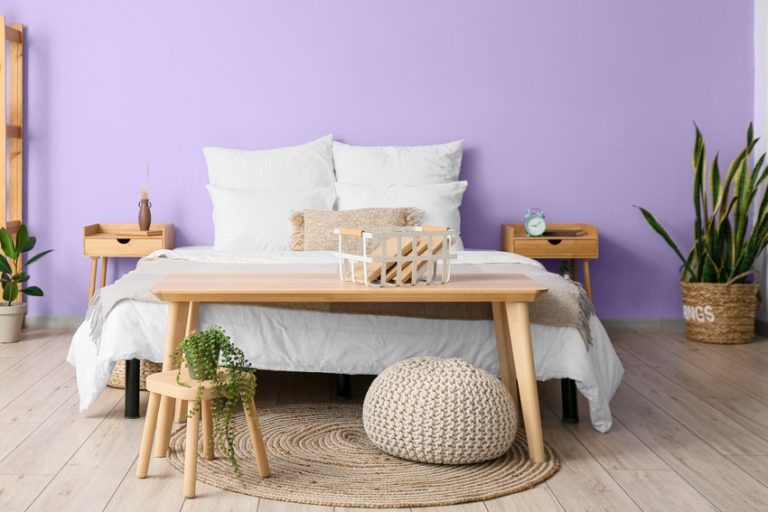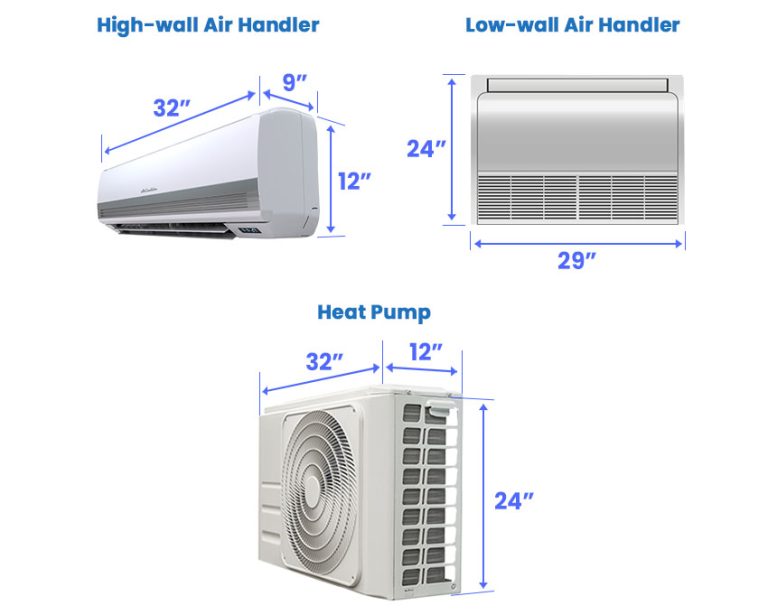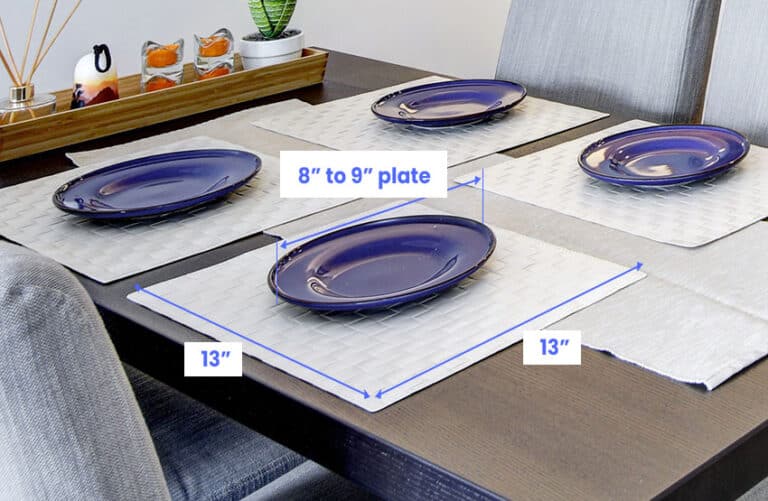Murphy Bed Dimensions (Size Guide)
Here’s our Murphy bed dimensions guide, including how to measure them and different sizes.

Murphy beds have plodded along from the original, gaining popularity in the early 1900s. Since then, many advancements in safety and design have been introduced for every need and space.
Here, we’ll tell you how to measure your next Murphy bed and the different dimensions of each standard size.
How to Measure Murphy Beds
Quicklook – How to measure
| Measuring Tips | Important Details |
|---|---|
| Room Measurements | Measure room length and width. |
| Murphy Dimensions | Depending on size, they typically extend 6-7 feet (72-84″) from the wall. |
| Space Calculation | Subtract frame length from room length; Have at least 30-36″ of space around frame. |
| Room Layout | Does not block doorways, closets or furniture like desks & dressers. |
| Obstacle Assessment | Check for heaters, light fixtures, windows that might affect furniture placement. |
| Bed-Making Space | Allow room to change sheets |
| Room Functionality | Consider room use with sleeper down. Outline the area to get a feel for the floor plan. |
| Visualizing Layout | Use painter’s tape or card board to get a visual idea of the layout. |
| Ceiling Height | Check for closing clearance with ceiling fans or lights. |
The first step is determining what size and variety of Murphy beds you want for your space. There are twin, double, and even queen and king-sized beds to choose from.
You must also decide whether you’re the sleeper to fold vertically or horizontally. For a more detailed guide on sizes, go to choosing bed sizes here.
Once the logistics are decided, the next step is measuring the wall horizontally on the spot where you wish to position your mattress.
It is crucial to have your measurement be 47 inches at the minimum to accommodate at least a twin-sized mattress mounted vertically and 80 inches to be mounted horizontally.
This measurement does not include space for side cabinets, so if you wish to have storage in your frame, simply add their width to the bed’s width.
There will be no obstacle if you install a horizontal design, as any room ceiling height will be enough to accommodate it. Still, a ceiling height of 82 inches is the minimum needed for a vertically mounted sleeper. To check, measure the size of your floor upwards to the ceiling for a vertical furniture piece to fit.
Suppose you plan to install your Murphy bed into an existing cabinet. In that case, the minimum depth of the closet should be 21 and 3/4″ deep for a vertical frame and 20 3/4″ for a horizontally mounted design.
The next step is to ensure you have enough space to move around the room when the mattress frame is not folded. To do this, measure from the wall where you will mount the furniture to the other end of the wall.
When in use, a vertical twin will measure 85 1/4, while a queen will measure 90 1/4. For horizontally mounted styles, a twin will measure 49 1/4″, a full will measure 49 1/4″, and a queen will extend to have a measurement of 70 1/4″. Be sure to leave 30 to 36″ of space on each side of the bed.
Use tape to outline the dimensions of your frame and move the furniture in the room to make sure that everything will still fit in your space and ensure that you still have the freedom to walk around effortlessly and comfortably.
The next step is ensuring that the bed and mattress would have no trouble accessing the room, primarily if the room is situated upstairs. Measure everything from the height and width of your door and compare it to the dimensions of your mattress.
King Size Murphy Wall Bed Dimensions
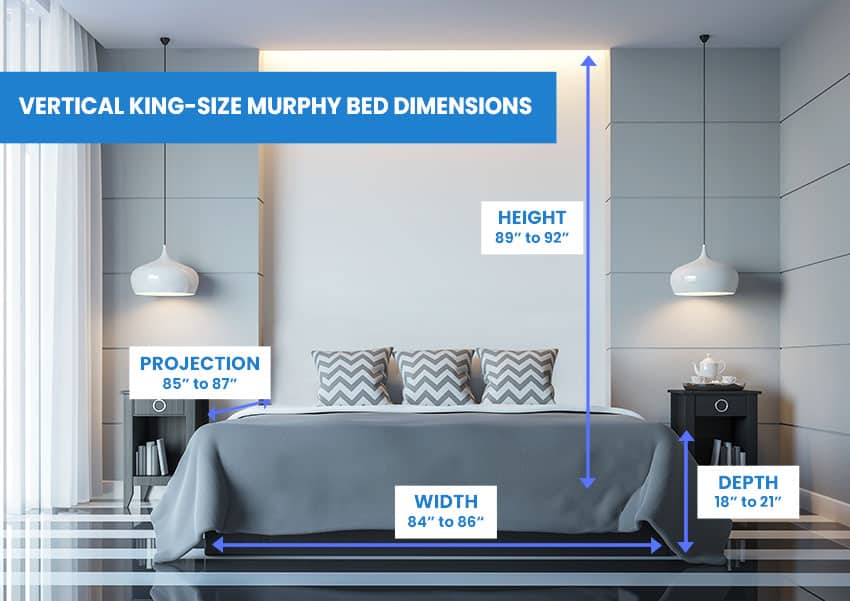
A king-size Murphy bed will work great for restless sleepers or for the person who simply wants the luxury of comfort with the extra space available. A king-size is also the biggest standard size available for these beds.
You can get them vertically, and vertical king-size beds have a dimension of 89 to 92 inches in length or height, a width of 84 to 86 inches, and a depth of 18 to 21 inches. Vertical king-size beds have a projection of 85 to 87 inches.
Projection size is the measurement from the wall to the sides of your frame facing outside when the bed is opened.
Horizontal king-size beds have a dimension of 68 to 70 inches in length or height, 85 to 90 inches in width, and a depth of 16 to 20 inches, and with a projection size of 78 to 80 inches.
Queen Fold-down Dimensions

A queen-size Murphy bed will make sleeping and relaxing that much better, and with a few added tweaks like cabinets and even the addition of a desk, it will make working from there efficient and comfortable.
Vertical queen-size Murphy beds have dimensions of 87 to 89″ for the height or length of the bed, a width of 64 to 68″, a depth of 18 to 21″, and a projection size of 85 to 87″.
On the other hand, horizontal queen-size beds are 68-70 in height or length, 85 to 90 in width, a depth of 16 to 20″, and a projection length of 65 to 68″.
Full-Size Hideaway-bed Dimensions
The typical dimensions of a full size or double size vertical Murphy bed are 82 to 87″ in height, 57 to 61″ in width, 18 to 21″ in depth, and 80 to 82″ in projection
For the horizontal full size sleeper, the typical height is between 62 to 64″, width between 80 to 85″, depth from 16 to 20″, and a projection between 58 to 60″.
Single Bed Sizes

Single size beds are also called twin size and are two terms for essentially one thing. Single size beds are usually used by children to teenagers.
Single or twin-sized frames would work excellently in smaller spaces, and a vertical twin-sized Murphy bed has dimensions of 82 to 87 inches in length or height, 43 to 46 inches in width, it has a depth of 18 to 21 inches and a projection length of 80 to 82 inches.
There are horizontal twin-sized beds with heights or lengths of 45 to 48 inches, width of 80 to 85 inches, depth of 16 to 20 inches, and a projection size of 44 to 46.
Vertical Convertible Dimensions
Out of all the standard sizes available for convertible styles, we left out two vertical Murphy bed dimensions for a Twin XL and a full or double.
The dimensions of vertical Twin XL are 87 to 89 inches for the length, 43 to 46 inches for the width, and a depth of 18 to 21 inches. It also has a projection size of 85 to 87 inches.
A vertical double-size folding bed, on the other hand, has these dimensions. 82 to 87 inches for the length and height, 57 to 61 inches in width, 18 to 21 depth, and 80 to 82 inches in projection length.
Wall Space Needed For a Vertical Bed
In order to accommodate a vertical pull-down bed, a minimum wall space of 82 to 88 inches is required. For the bed to open, an area of about 6 to 8 feet at the minimum is needed for the room.
Horizontal Folding Bed Sizes
We have given the fold-down types three standard sizes: a king, a queen, and the basic single bed. Here are the other dimensions for the remaining two.
For a horizontal Twin XL Murphy bed, the measurements needed are 45 to 48 inches for the height, 85 to 90 inches for the width, 16 to 20 inches for depth, and a projection size of 44 to 46 inches.
A horizontal double bed is 62 to 64 inches for the length, 80 to 85 inches for the width, a depth of 16 to 20 inches, and a projectile size of 58 to 60 inches.
Wall Space Needed For a Horizontal Design Bed

A horizontal hideaway bed might be the better choice for rooms with less clearance for ceiling and floor areas.
You need a space about 80 to 85 inches wide to accommodate a horizontal frame. The horizontal cabinet will need a vertical length of 47 to 69 inches on the wall when folded.
Floor Space Needed For a Murphy Style Bed
The floor space needed for your Murphy bed is the length and the width of the mattress itself when laid down. Typically, it is a space between 6 to 8 feet.
Do Folding Beds Have to be Attached to a Wall?
If you choose to have a wall-mounted folding bed with encasing and all the works, it will need to be attached to the wall.
As another option for you to consider, you could also mount the frame on the floor. A downside to this option is that it can permanently damage your floors. Adding a wall-mounted space-saving sleeper is the safer option.
Does a Pull-down Bed Need a Special Mattress?
Technically speaking, yes, any mattress would do with Murphy beds as long as they withstand being held up vertically or horizontally.
However, some types of mattresses work better with these folding beds, which are memory foam or latex mattresses, because they can retain their structural integrity even when folded, and they cannot easily slide off.
Innersprings and hybrids, with their weight and bulkier size, might end up slumping and falling off.
How Much Weight Can a Murphy Wall Bed Hold?
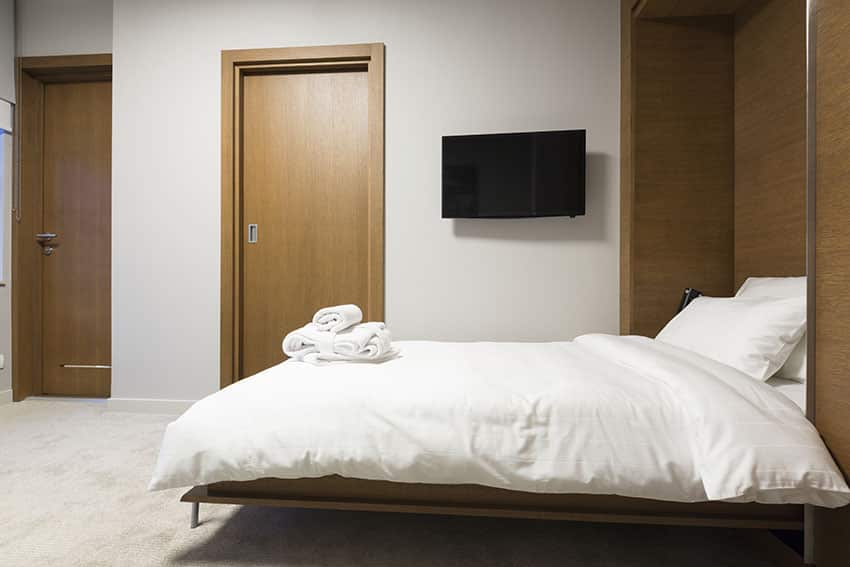
The maximum weight a Murphy bed can hold is 250 to 1000 pounds for particular mattresses and frames, with a mechanism that distributes the owner’s or the owners’ weight against all mattress surfaces. Check the manufacturer’s specifications before buying to ensure the product is sufficient for your capacity needs.
Owning a convertible wall sleeper has been a space-saving hack for a long time now, and as people are moving more in the city with little studios and micro apartments, we do not see an end to this tiny living design trend soon.
Just remember to measure everything correctly, and you will have a smooth experience assembling or DIY-ing your Murphy bed.
For more related content, visit our guide to the different types of beds here.


